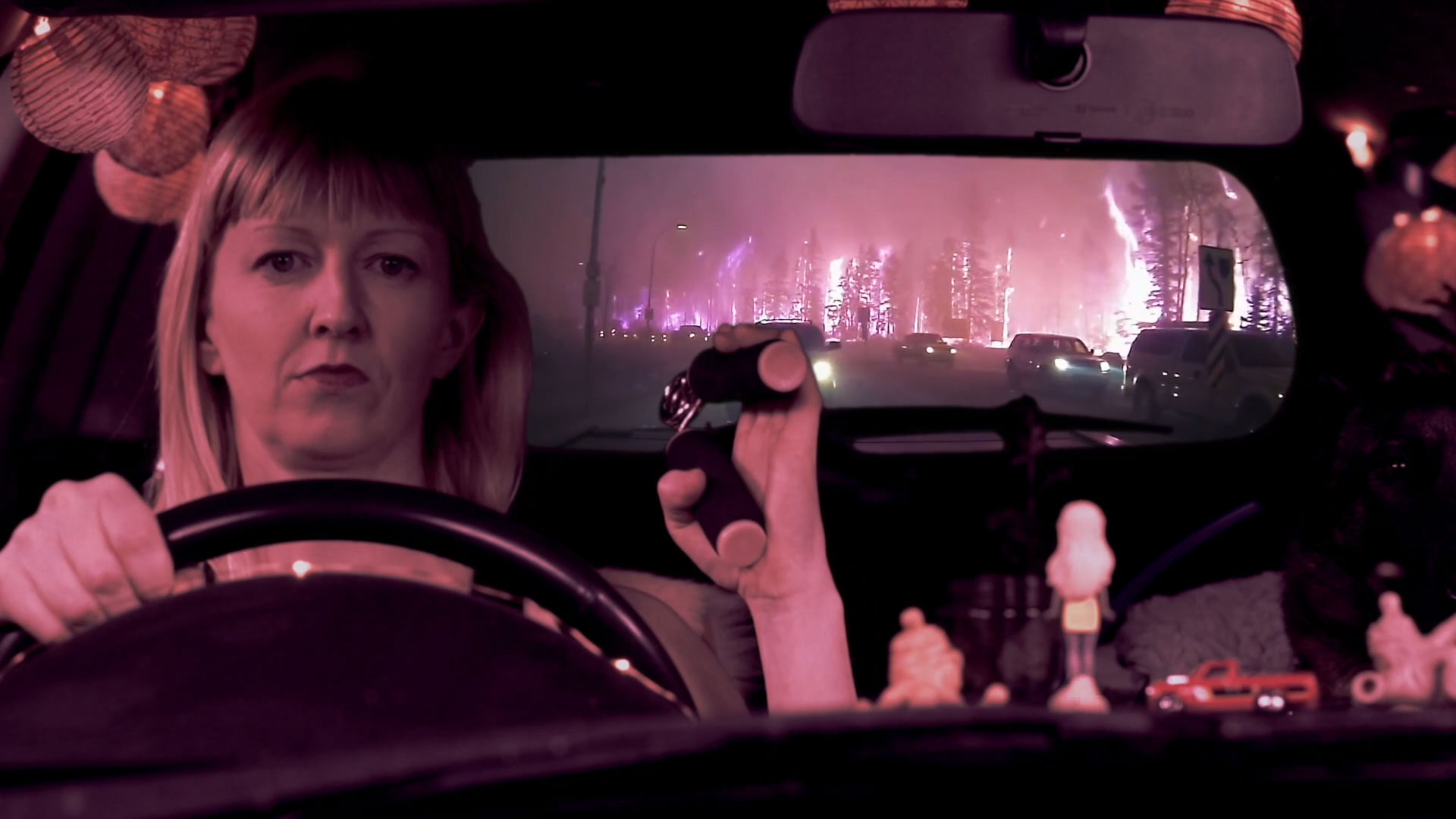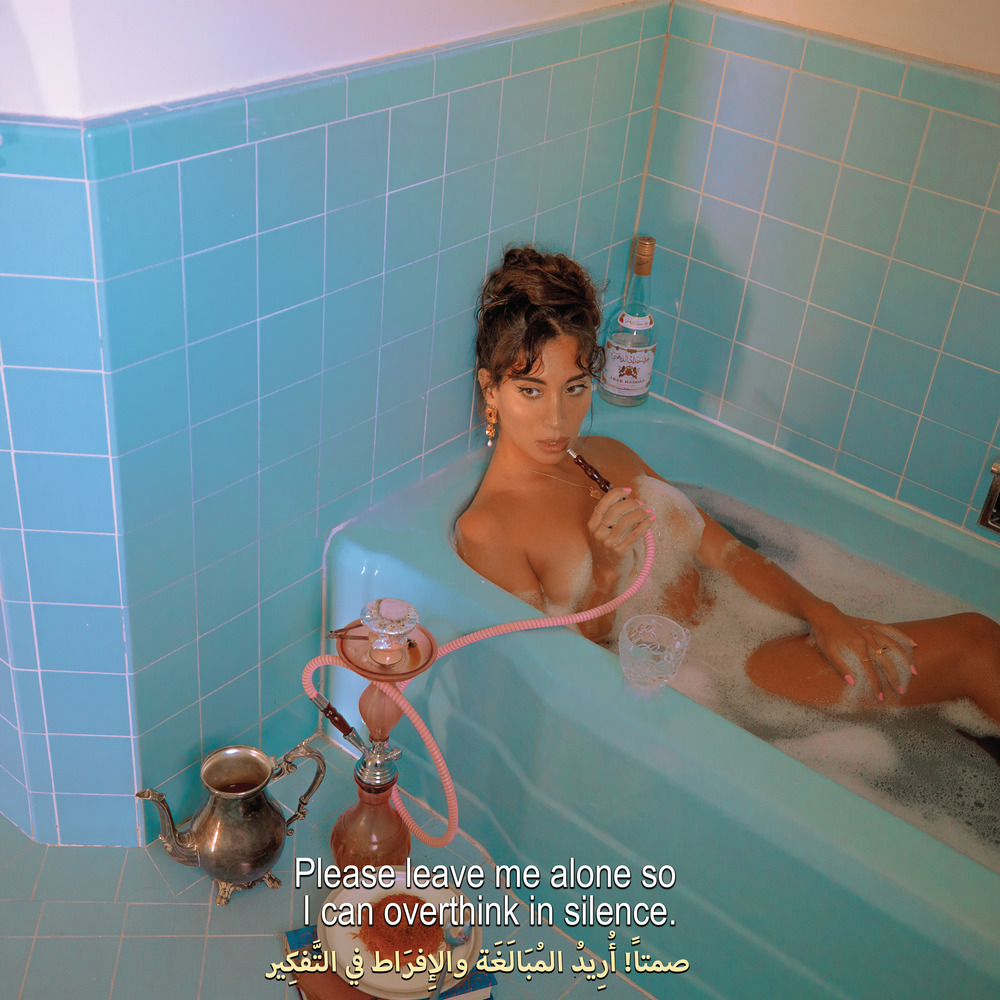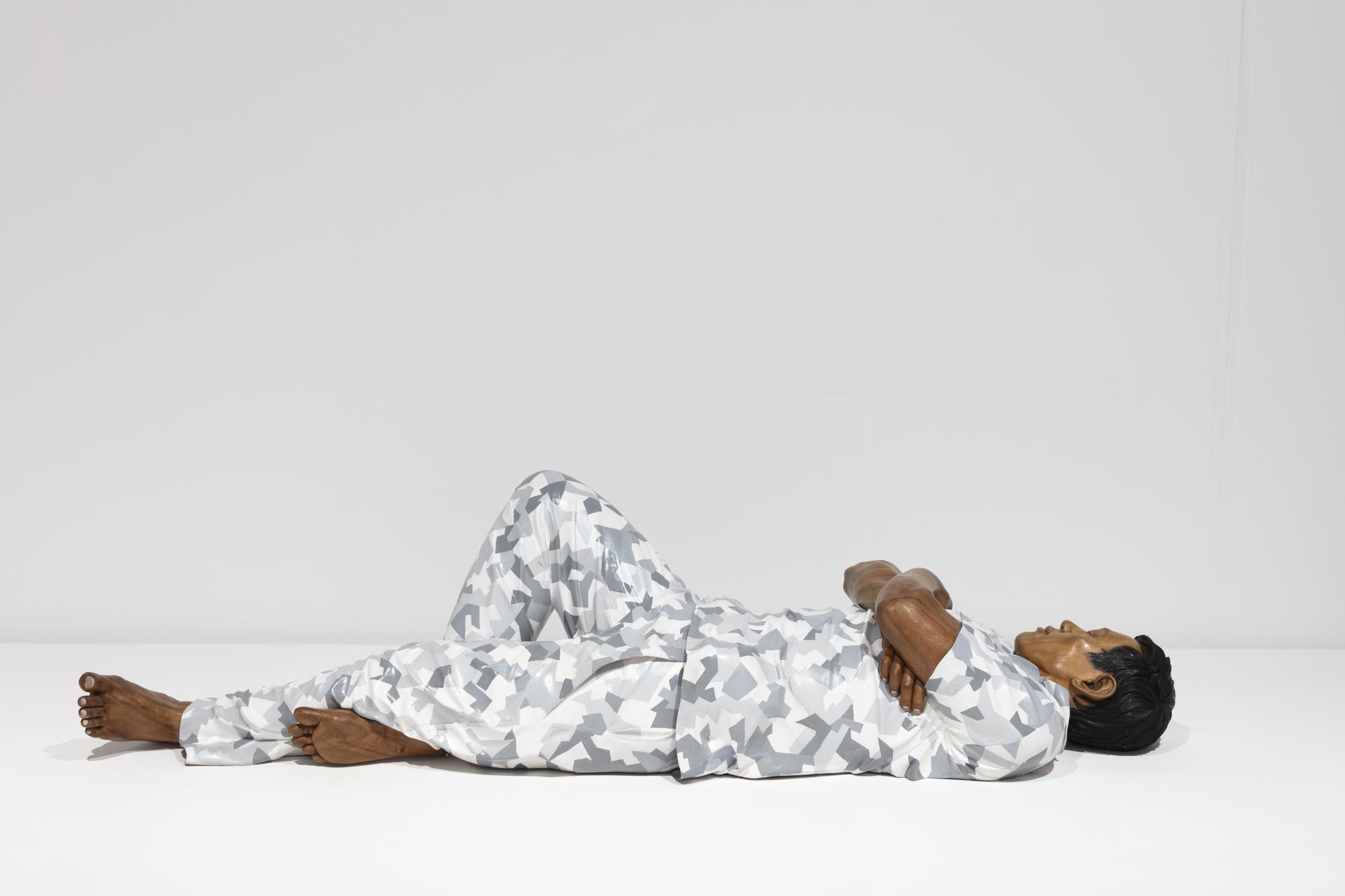Christopher Pease’s new light-based artwork on AGWA’s rooftop is a bold reclamation of unceded Country
Measuring five- by 34-metres and eveloping three of the rooftop’s exterior walls, the work is one of the most significant commissions of a Noongar artist in the state’s history.
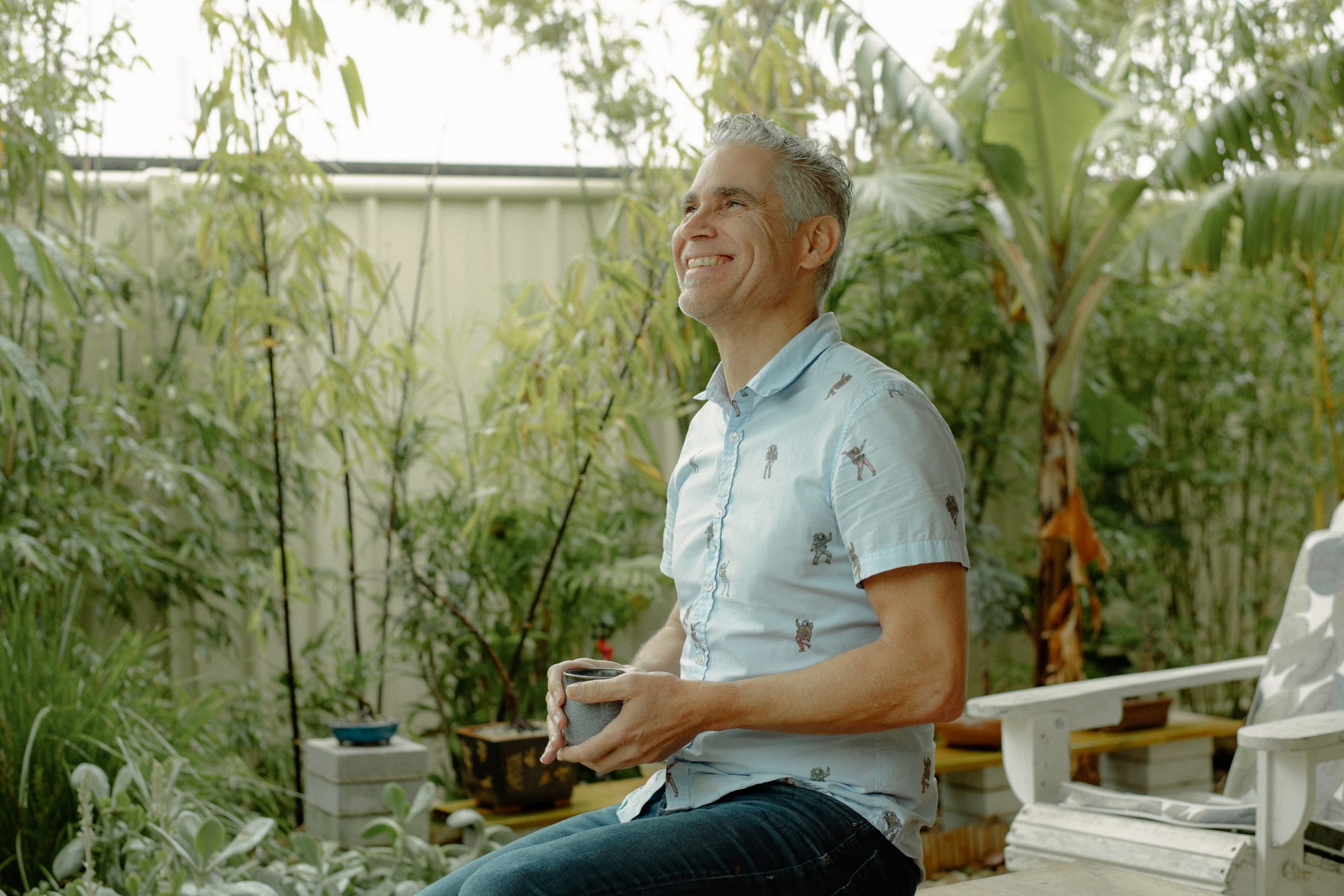
The river that flows through the city is oppressed and we forget it was there for uncountable years before that city colonised its banks. We name that place for the city, named for another city far away. Like all capital cities on this continent, except perhaps the national capital, its name is colonial.
Remember, the river was there long before the city and will be there long after, flowing in the everywhen, the time that knows no time.
Like many Noongar people, my family is associated with rivers; oral history names the river from which we came, a place that is now part of a national park. Even after colonisation, we were associated with the south coast, with white sand, scrubby trees, estuaries, wind and salt spray. My grandfather was born in or near Ravensthorpe between Esperance and Albany in WA. My dad was born in a hospital in Boorloo, on the Derbarl Yerrigan, during the war, and after the war his father returned the family to our Boodjar.
I was born and grew up not far from the Derbarl Yerrigan, my parents live near there still. I return there from time to time. More frequently as I get older.
I live now on the Birrarung Marr, in Naarm. Rivers define me. Rivers have a gravity, it is them I always stumble towards.
We are always of rivers, beaches and forests, just like coasts are defined by the water that caresses them, like riverbanks are defined by rivers that flow through them. Many Aboriginal people define their identities by the type of water they live near: “Saltwater people” and “Freshwater people”. Where there is no flowing water and no sea, the waterholes are sacred.
All waterholes are sacred.
I am writing this from the desert, and I keep looking for the water I cannot find.
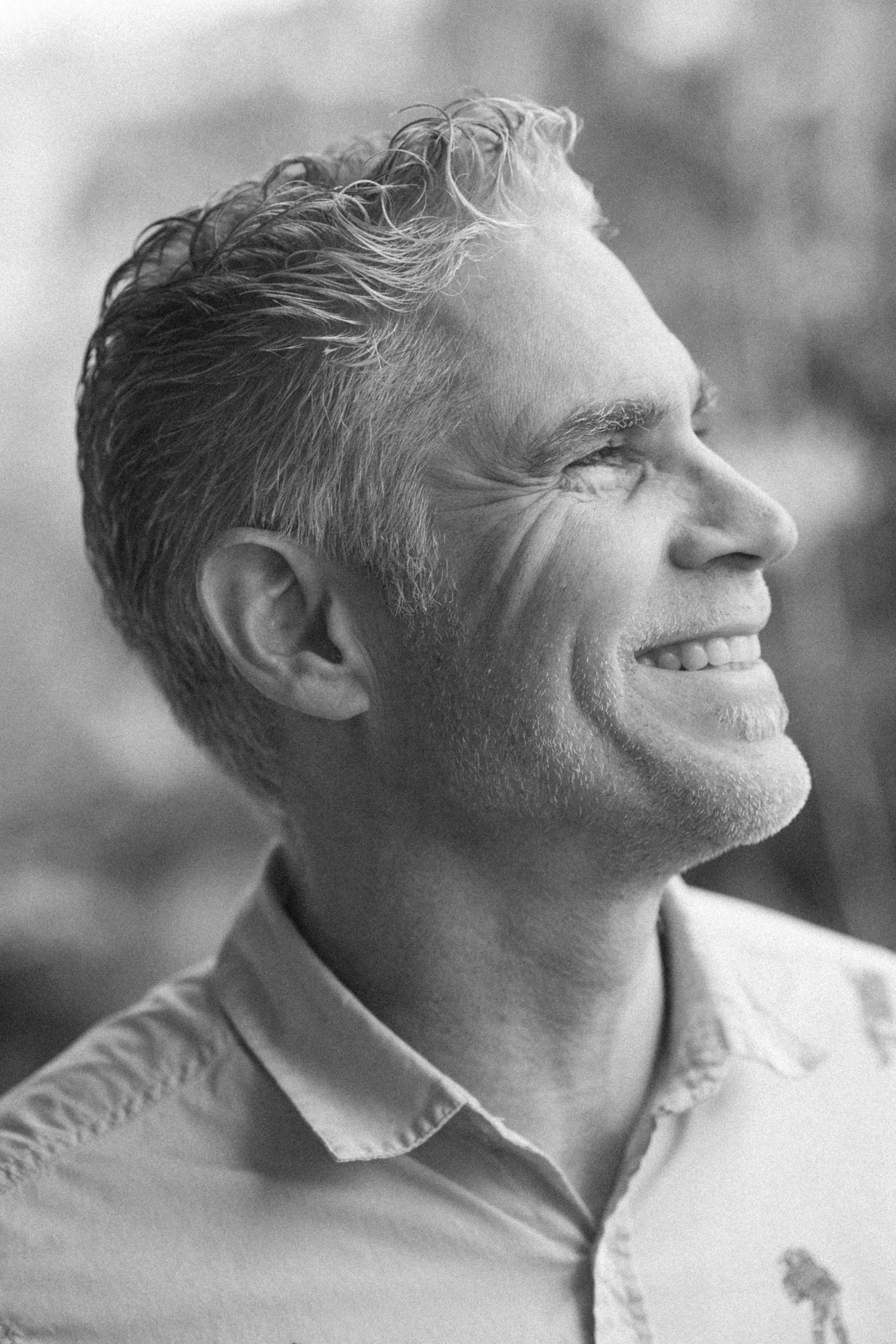
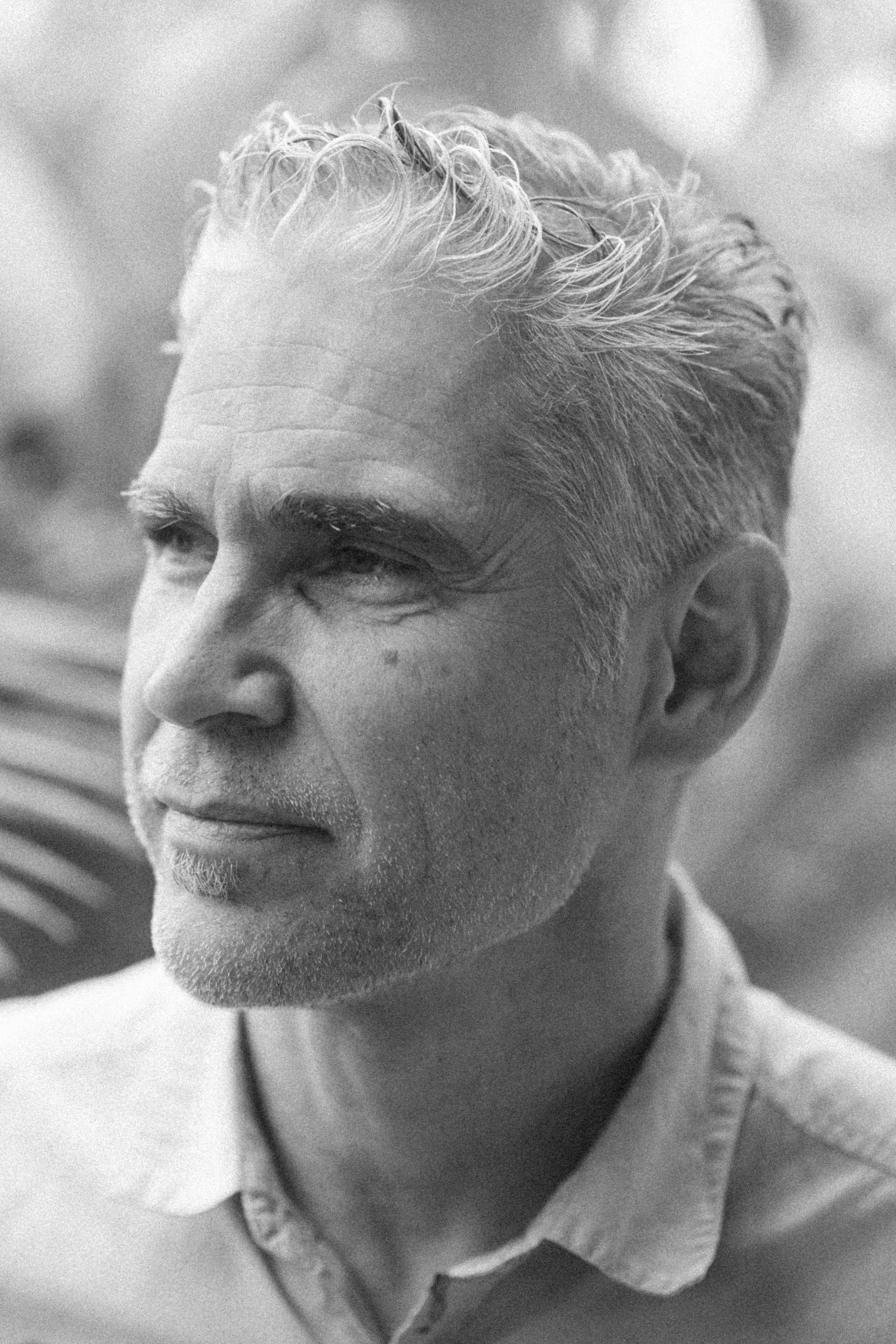
Christopher Pease is of the Bibbulmun, Wardandi and Minang mobs but like me, he grew up in Whadjuk Noongar Country, where so many of us ended up. In his monumental new work Targets (2021), a five- by 34-metre painting and light work commissioned by AGWA to envelop three sides of its new rooftop, Pease unpacks colonisation and genocide through the image and metaphor of the river; the lifeblood of the city and of the Noongar people.
Pease’s art practice includes the deconstruction and interrogation of colonisation through the re-interpretation and reworking of historical works of art from settler colonial artists. This can be seen in his work Kaatwara, a finalist in the 2019 NATSIAA awards, which gives us the disembodied head of Noongar hero Yagan abstracted to a silhouette and wireframe shapes on a classical colonial landscape painting, complete with a blackfella camp.
We are invited in that work to examine the execution of a Noongar hero on a 19th-century idyll of Noongar Boodjar. We are reminded that people died to create the colony, that Yagan fought to resist the arrival of the colony on his ancestral country. On our sacred Noongar country.
Pease has used a similar methodology for his work on the AGWA Rooftop, which sits in the middle of Boorloo, also known as Perth, and would almost provide views to the Derbarl Yerrigan’s shores were skyscrapers not standing in between.
In Targets, Pease has reproduced Frederick Garling’s 1827 colonial work Swan River – View from Fraser’s Point, expanding it into a vast panorama, showing a longer stretch of the river. An abandoned camp has been added, engaging with the removal of our people when the colonisers arrived. Another new addition to Garling’s painting, Pease says, is a “colony of white rabbits” to its right edge, representing the white invaders both through their colour and their status as a non-native invasive species. On the left edge we see a black bull, another invading species with a tendency to destroy our freshwater places.
Between the rabbits and the bull there are two colonisers looking over country, one of them a man with a gun. These are not additions; they are features of the original Garling work.
The concentric circles are reminiscent of real targets, signifying danger to the river, to the river’s people, to my people, Christopher’s people. But they are also an Aboriginal icon, representing a campfire, a place, a waterhole or home in countless works by Aboriginal artists from all parts of the continent.
The landscape is overlaid by a row of concentric circles, one of them—almost right in the centre—a bright, urgent red, the red of blood and the Target department store logo. They are reminiscent of real targets, signifying danger to the river, to the river’s people, to my people, Christopher’s people. But they are also an Aboriginal icon, representing a campfire, a place, a waterhole or home in countless works by Aboriginal artists from all parts of the continent.
It might seem that fire and water are opposites but they are one and the same. They are part of home; without them there is nowhere to live. Fire and water are the two staples of existence, the two things that make a home; that define a place. To many Aboriginal people, the place you light a campfire becomes, through that act, a home.
Concentric circles and targets are a repeated motif in contemporary Aboriginal art as much as they are reminiscent of classical art. Tony Albert won the 2014 Telstra awards with We can be heroes; 18 photographs of young Aboriginal men with targets painted on their chests representing the truth that we are targets just because of our race. Richard Bell repeated the motif in a number of his Bell’s Theorem series works, and in Australian art it’s an Aboriginal thing (2006). They also appear in Pease’s own back catalogue, such as in Uncle Les (1999), a portrait of the artist’s Great Uncle in full traditional dress at a ceremony in Busselton, obscured by a grid of concentric circles, some of them red.
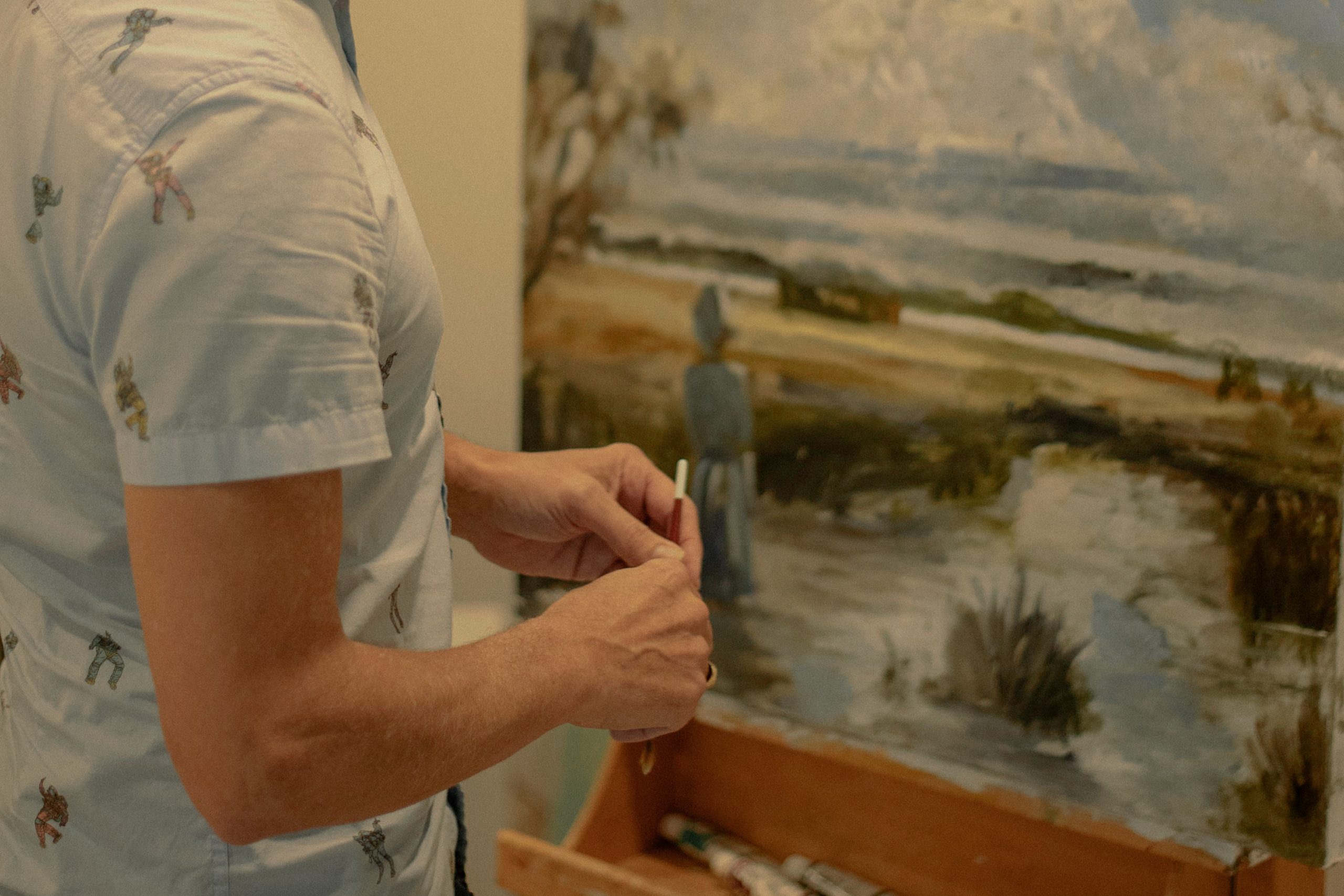
That early work was influenced by Jasper Johns’ Target series, but the target motif still resonates strongly with Pease today. “It’s about recognition that people are different,” he says. “Through a single motif, people will see different things—a logo for a retail chain, Jasper Johns, a Waterhole or Campfire, a target. Art is largely about interpretation and that changes according to the viewer’s culture, race, and background.”
The concentric circles in Targets remind us that colonisation was an attack on the land, the river and the people back at the beginning. A war began in 1788 with the arrival of the white man in Sydney Cove, but that war did not come to our Noongar Boodjar until 1826, with the garrison at the place now called Albany. It did not extend to Boorloo and the Derbal Yerrigan until three years later in 1829 when a colony was founded there too.
The culture of the continent has been suppressed by the colonisers, who were desperate to reproduce a copy of British culture here.
We need to remember that culture has a language and that culture and language have a place they belong. British culture and language belong in Britain; English words do not describe Aboriginal country well. The Noongar people belong in Noongar Boodjar and our culture and language belong there. We are not imports or usurpers, we are local and we belong. When we are told to “go back to where we came from”—we came from Noongar Boodjar. Pease invites us to think of Noongar culture and the place we belong.
“I think there is still a limited understanding in the wider community about what is Aboriginal culture,” Pease says. “Much of peoples’ understanding is general and not local or specific. This detail is very important to me because traditions, stories and customs vary widely depending on where you are. If people know about the history of local places, the better the understanding between Indigenous communities, government agencies and the wider community.”
“I think there is still a limited understanding in the wider community about what is Aboriginal culture. Much of peoples’ understanding is general and not local or specific. Traditions, stories and customs vary widely depending on where you are. If people know about the history of local places, the better the understanding between Indigenous communities, government agencies and the wider community.”
The final layer of Targets is the geometric pattern of light and darkness, hexagonal shapes and angles perforated into the panels on which the work is printed, through which light (installed behind) will glow at night. These patterns speak of Noongar body paint, reminding the viewer that we have been here longer than the colony and are still here. This is our place, Pease tells you, don’t forget.
Perhaps the man with the gun is taking aim at Country, at the river, at the people conspicuously absent from the scene. With that gun he is mugging country, stealing its water, its lifeblood and the lifeblood of Noongar people and culture.
Rivers, coasts and bays were always going to be points of clash. Fresh drinking water is one of the most important commodities, both Aboriginal people and wadjelas (white people) require it. The British were a maritime empire, they colonised coasts first, did their first inland exploring and their first spread of their influence inland up the same rivers on which Aboriginal people relied.
Targets presents a landscape—one first painted by Garling of what was named Point Fraser and now expanded and improved upon by Pease based on his own research and knowledge of Boodjar. The landscape is depicted after the elimination and dispersal (by massacre) of the Noongar inhabitants, but before the city had been built. AGWA itself now stands here. The work is a snapshot of colonisation in action: the rifle and the targets, the colonisers and the colony of rabbits, the bull and the empty camp all remind us that people were living on that river forever and the river was stolen by the colony.
In the end what Pease has created, really, is a reclamation of Boodjar. Our Boodjar that was never ceded.
First published in the print publication The View From Here in October 2021.
